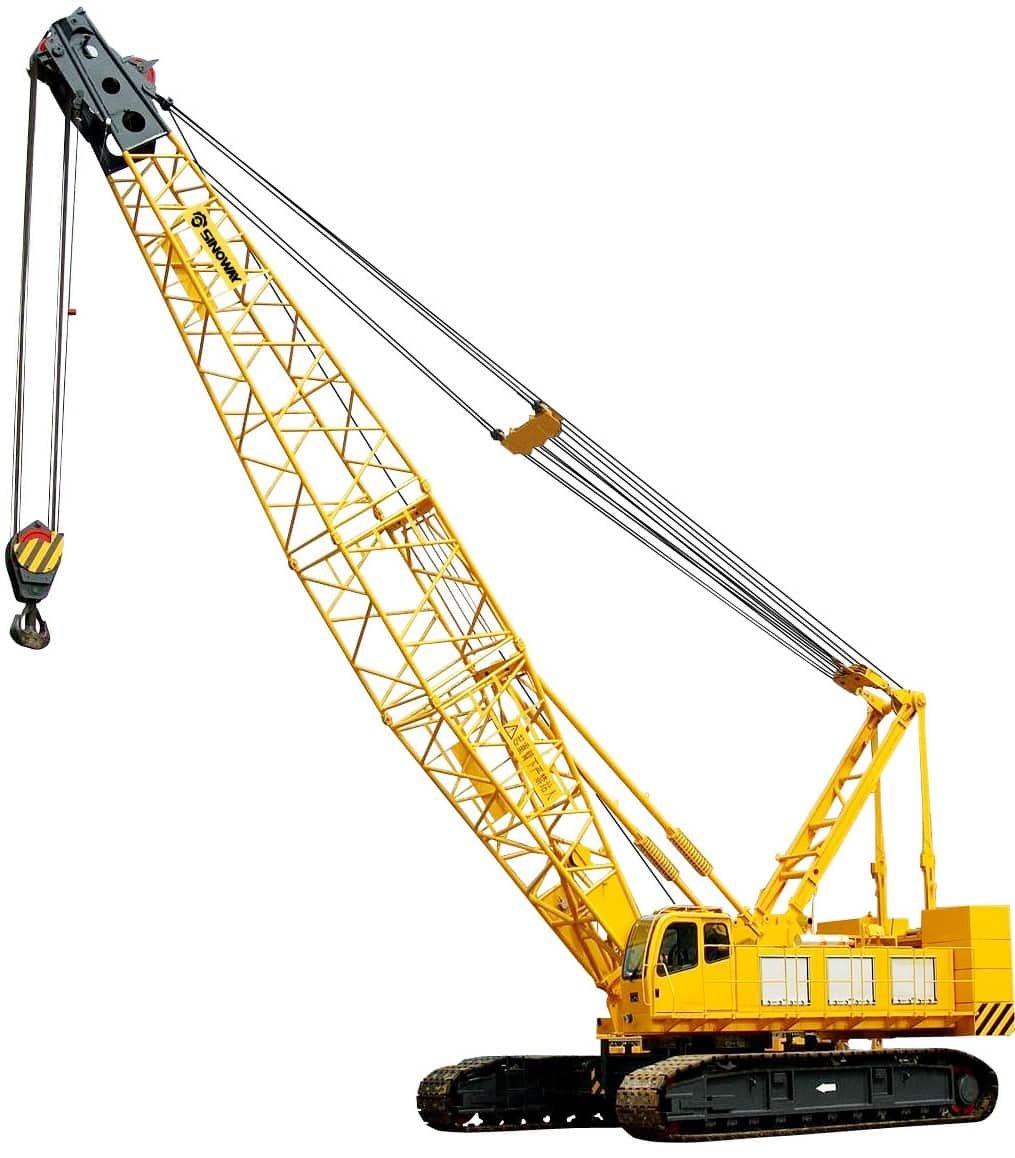If you’re a construction company owner or manager, you already know how hard it is to attract, and then manage and retain good construction workers.
However, if you want the best possible workers for your construction business, there’s no way around it.
It’s also no news that the construction industry is in dire need of workers, particularly those with the abilities, motivation, and updated skills to work in a quickly changing construction environment spurred by the rapid development of technology.
So, what can you do to attract such new talent to your construction business?
For starters, read this article.
In this article...
Take the Long-Term Approach
When it comes to attracting new talent, thinking long-term pays in more ways than one.
Taking a long-term view involves a construction company creating a strategic workforce plan that takes account of the company’s future needs for new hires.
Of course, such a plan should be properly established and regularly updated.
That allows companies to understand how much new talent they will need to employ in the future, how available they are in the labor pool, and what their skill set should include—because of the aforementioned rapid tech advancements in construction.
With this knowledge, they can then systematically develop their recruitment and training strategies.
So, what would creating such a plan involve? Or better yet, how would companies forecast their longer-term labor needs? Here’s a quick guide, courtesy of Bridgit.
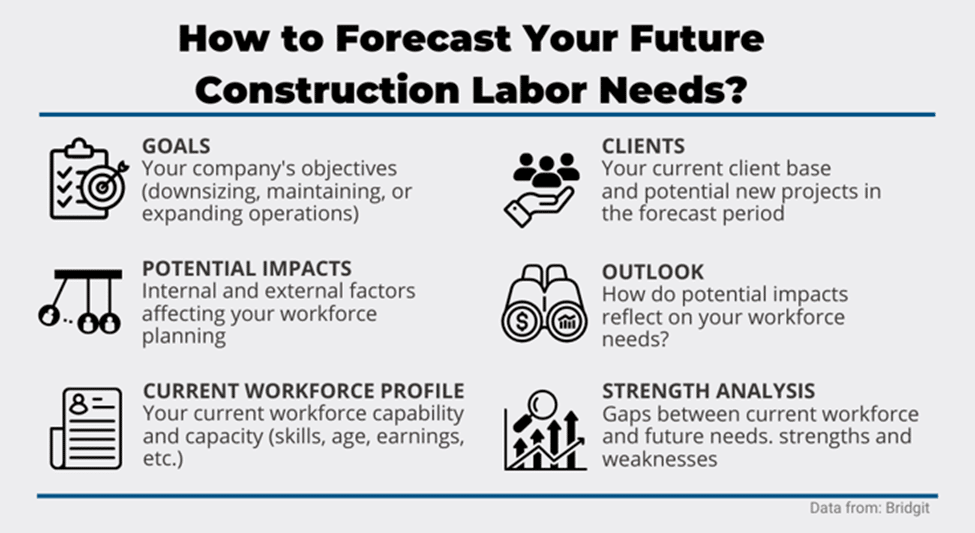
Naturally, the company’s goals and clients, i.e., projects in the pipeline and on the horizon, should be carefully considered first.
This is followed by an assessment of internal and external challenges associated with the current workforce profile and then an analysis of talent gaps and future needs.
Ultimately, this enables the company to understand how much new talent it should attract, what skills the employees should have, and how available they are in the labor pool.
From there, the company can develop suitable recruitment, retention, and training strategies by combining other suggestions in this article.
Overall, taking the long-term approach and creating a strategic workforce plan will bring clarity to your future labor needs and current workforce capacities.
Redefine Your Company Culture
As most construction company cultures tend to be conservative and averse to change, redefining your company culture to encourage innovation and embrace change can help you attract new talent.
Among the many challenges construction companies face when trying to attract skilled and motivated workers, a rigid and old-fashioned company culture is often why they have trouble finding and retaining such workers.
This is only aggravated by external factors affecting talent attraction, such as skilled labor shortage and rising employment costs.
Thus, by finding ways to redefine the existing, outdated company culture, you can show that your business is keeping up with the times and embraces innovation and change, which can help attract new, younger talent.
And you can do so by using some of the methods described in this article.
For example, DPR is a construction company with a strong culture focused on change, innovation, and on-the-job satisfaction, which it then uses to attract new hires.
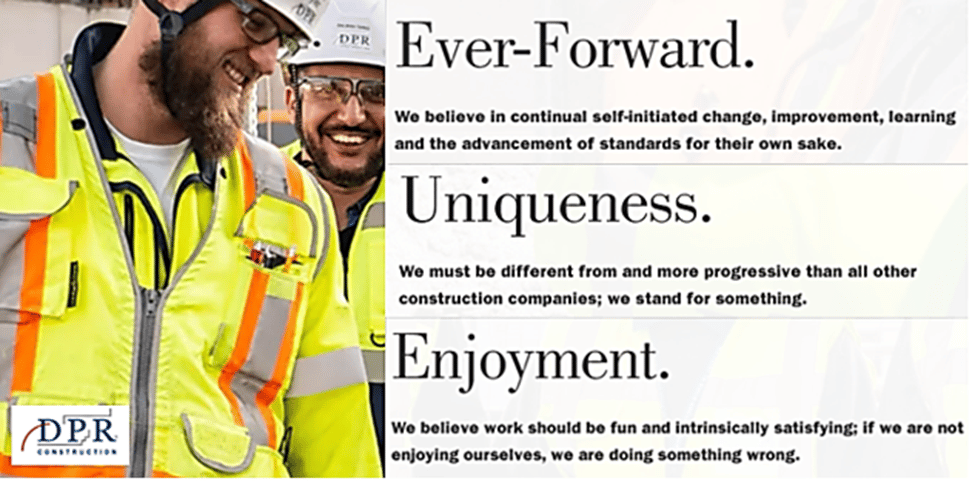
Of course, the new company culture you’re trying to establish and then utilize to attract new employees should reflect your company’s vision and values that were communicated and discussed with all employees, not just senior management.
In other words, you’re not innovating the company culture just to attract new talent and then see them leave as they realize that the reality is entirely different than advertised.
This means that the task of rejuvenating company culture is a company-wide effort that includes an honest review of company policies and practices coupled with the employees’ sincere (preferably anonymous) feedback.
This will enable construction companies to redirect their culture towards embracing change and innovation, thus helping them attract new talent.
Use More Construction Technology
Of course, using more construction technology is a big part of embracing change and innovation.
Technological advancements are increasingly used not only to reduce the time and expenses needed to complete construction projects, but also to redefine what working in construction means.
In other words, construction technology that takes operators out of dangerous conditions and/or automates tedious tasks can significantly improve working conditions in various construction jobs, making them more appealing to potential new hires.
With so many new technology tools and solutions entering the construction industry, there are numerous examples of tech that can both streamline your operations and help attract younger workers with appropriate skills.
For instance, drones, robots, and other remote-controlled, semi-autonomous, or autonomous tech solutions enable contractors to attract new employees by making their jobs less dangerous and sometimes more like playing a video game.

In addition, numerous specialized software apps can automate time-consuming, manual tasks and increase employees’ safety and productivity, thus making construction jobs more appealing.
Of course, when such solutions are actually adopted and utilized, a construction company can use them to attract new talent by advertising them on its website or mentioning them in its job descriptions.
For instance, the fact that a construction business uses a simple and affordable tracking app like GoCodes Asset Tracking to track the location, usage, and maintenance of tools and equipment could be leveraged to attract new hires.

More specifically, using this app could be advertised on your website and job postings by saying something like, “Our company embraces tech solutions that ensure you always have the right tools and equipment to do your job safely and efficiently.”
And this is just one example of how construction companies can make use of the tech they’re using to appeal to new generations.
Overall, using more construction technology can, all in one package, help streamline construction operations, increase overall safety and productivity, and also be used to attract new talent with appropriate skills.
Create a Recruitment Program
Your recruitment program can also be a very useful tool for attracting new talent.
A good recruitment program can involve apprenticeship, internship, and mentorship programs to attract younger potential hires, familiarize them with your company culture, and then hire the best of them.
For instance, this is how McCownGordon Construction encourages young people to spend a summer gaining real-world experience before they graduate college.
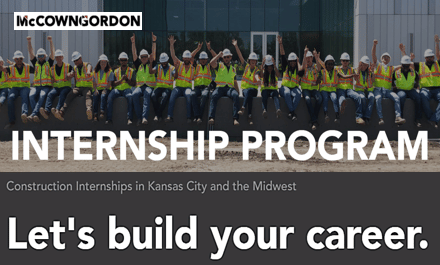
Long story short, students gain an overview of everything the company does along with first-hand experience in what they’re studying to be, whether in construction or support services like IT, marketing, and accounting.
And McCownGordon gets to know and assess the best talent among them and then has a competitive advantage because those students are already familiar with the company values and culture, and thus much more likely to take the job.
However, any recruitment program aimed at attracting new and especially younger talent must also consider how it will reach the best candidates.
Nowadays, the most effective method is through technology—for instance, by being active, sharing engaging content, and/or posting job openings on social media like LinkedIn.
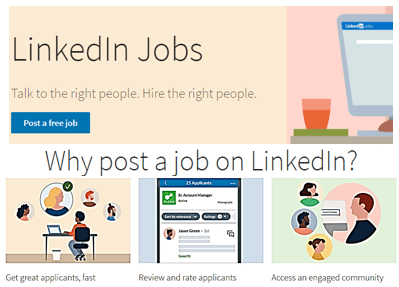
Of course, to find new talent, construction companies should, depending on their needs, look into various free and paid specialized online job boards, or take advantage of other venues like specialized online forums and local communities.
Thus, creating an effective recruitment program, whether aimed at finding the best talent while still in college or directly on the labor market, will involve good forecasting of long-term labor needs, a modernized company culture, and smart use of technology like social media.
Offer Career Development Opportunities
Beyond the salary and good benefits, people often strive to master their skills and advance their careers.
Thus, offering clear career development opportunities helps construction companies both attract talented hires and incentivize them to stay in the company.
That will require an analysis of the company’s current job roles, followed by identifying ways to facilitate development opportunities for employees to advance their careers within the company.
Such career development opportunities can include cross-training, apprenticeships, assistance paying for further education, training, and continuous development programs.
Again, when such career opportunities are available internally, companies like Gilbane will highlight them to appeal to new talents with different backgrounds.

Their internal training and talent development program (Gilbane University) follows their employees along their career path, helping them reach their full potential.
The methods used to develop their career include on-the-job training, certification support, career development plans, and mentorship delivered through webinars, podcasts, virtual meetings, in-person training, and job aids.
As said, other than salary and benefits, younger generations want to be able to expand their skills, learn new things, and advance their careers.
Consequently, prudent construction companies are eager to offer those opportunities as they help them attract and retain new talent.
Appeal to a Sense of Purpose
As the construction industry battles different reputation issues, appealing to a sense of purpose in new hires can be a smart way of attracting them to your construction business.
Today, even solid wages, benefits, and career opportunities often aren’t enough to attract younger generations to the construction industry.
Why? Because they increasingly want their jobs to have a deeper purpose and meaning.
The construction sector, burdened by other reputation issues, struggles to provide that.
The reasons for this are multiple and varied but mainly stem from outdated recruitment practices of construction organizations and the traditional perception of construction as hard and dangerous work.
So, one of the biggest tasks facing the construction industry is changing that perception and showing the rich variety of careers it offers, thus enabling companies to attract new talent from a wider pool of higher-quality candidates.
And an excellent way to do this is to appeal to their sense of purpose by stressing how important construction is for the functioning of society, as highlighted in an article shown here.

In other words, potential new hires should be reminded that, if they venture into the construction industry, they might be building schools, hospitals, roads, bridges, and other vital infrastructure that keeps society as we know it going.
Additionally, they can help further sustainability and environmental issues, thus helping fight pollution and climate change.
Overall, despite the industry’s failures to highlight its outstanding importance to society, you can do so and attract new talent by reminding them how invaluable their work in construction could be.
Diversify Your Workforce
By diversifying their workforce, construction companies cast a wider net to attract new talent from one of the underrepresented groups in the construction industry—women and ethnic minorities.
Moreover, highlighting diversity, equity and inclusion (DE&I) in their hiring process can help companies appeal to younger individuals, women, and minority members that would not have otherwise considered construction.
But first, let’s see why young people, particularly women and minorities, often do not choose a job in construction as their potential career.
As with the sense of purpose, the reasons for this are numerous but can be boiled down to perceiving the construction industry as traditionally dominated by middle-aged, male, and Caucasian employees.
And that perception is often correct.
For instance, in 2021, women accounted for only 11% of the workforce in the construction industry, primarily in office and administrative positions.
Likewise, some racial minorities were underrepresented in construction compared to their share of all employees (African Americans and Asians) or overrepresented as construction laborers (46.7%) and underrepresented in management positions (Hispanics).
All these statistics just confirm that focusing on hiring from a more diverse pool of workers and stressing the diversity and inclusion already present in the company can attract new talent that would not have otherwise considered construction as their profession.
Naturally, many construction companies realized this and made appropriate adjustments to their company culture and recruitment practices, like McCarthy.

By highlighting their diverse and inclusive culture, they appeal to young people who would usually be discouraged from considering construction as their career path.
Thus, by diversifying your workforce and integrating it into your recruitment practices, you can do the same and attract new talent from a wider pool of candidates.
Conclusion
So, having covered these seven strategies which you can utilize to attract new talent to your construction business, it’s evident that, despite many challenges and perception issues to overcome, there are ways to hire and retain motivated and skilled workers.
On top of that, these strategies will, when applied, redefine your company culture, help you leverage more construction technology, and diversify your force while giving your employees a sense of purpose, all of which will contribute to the success of your business.





